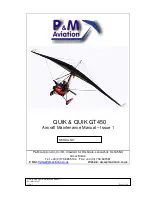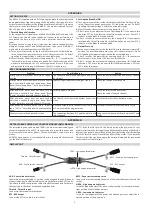
Copyright
© — Eclipse Aviation Corporation
Version 2.0 April 2007
1
1. Aircraft Overview
1.1 General
The Eclipse 500 is a twin-turbofan aircraft powered by two Pratt & Whitney Canada
PW610F-A engines. It is a five- to six-place, low-wing, T-tail aircraft using
conventional aircraft semi-monocoque structural elements joined together using both
friction stir welding and mechanical fasteners. The primary aircraft structure is
aluminum with limited use of composite materials in secondary structural areas such
as fairing and floor panels.
The Eclipse 500 is an ‘all electric’ aircraft and uses conventional mechanical flight
controls that do not require hydraulics, except for the master brake cylinders.
In general the management of the Eclipse 500 is divided into four functional areas:
1. Avio Integration (ACS and PFD)
2. Thrust Control (Throttles and Engine Control Systems)
3. Emergency Controls (Left Switch Panel Hard Switches)
4. Flight Controls (Mechanical Flight Control System)
The avionics system on the Eclipse 500 provides total aircraft integration through
redundant computer systems that provide the pilot centralized control of most aircraft
systems and functions. The Electronic Flight Instrument System (EFIS) consists of
two 10.4 inch Primary Flight Displays (PFDs) and a 15.3 inch Multi Function Display
(MFD). Referred to as Avio™, the Eclipse 500’s avionics increase safety and reduce
pilot workload.
Eclipse 5OO
Systems Manual
















































